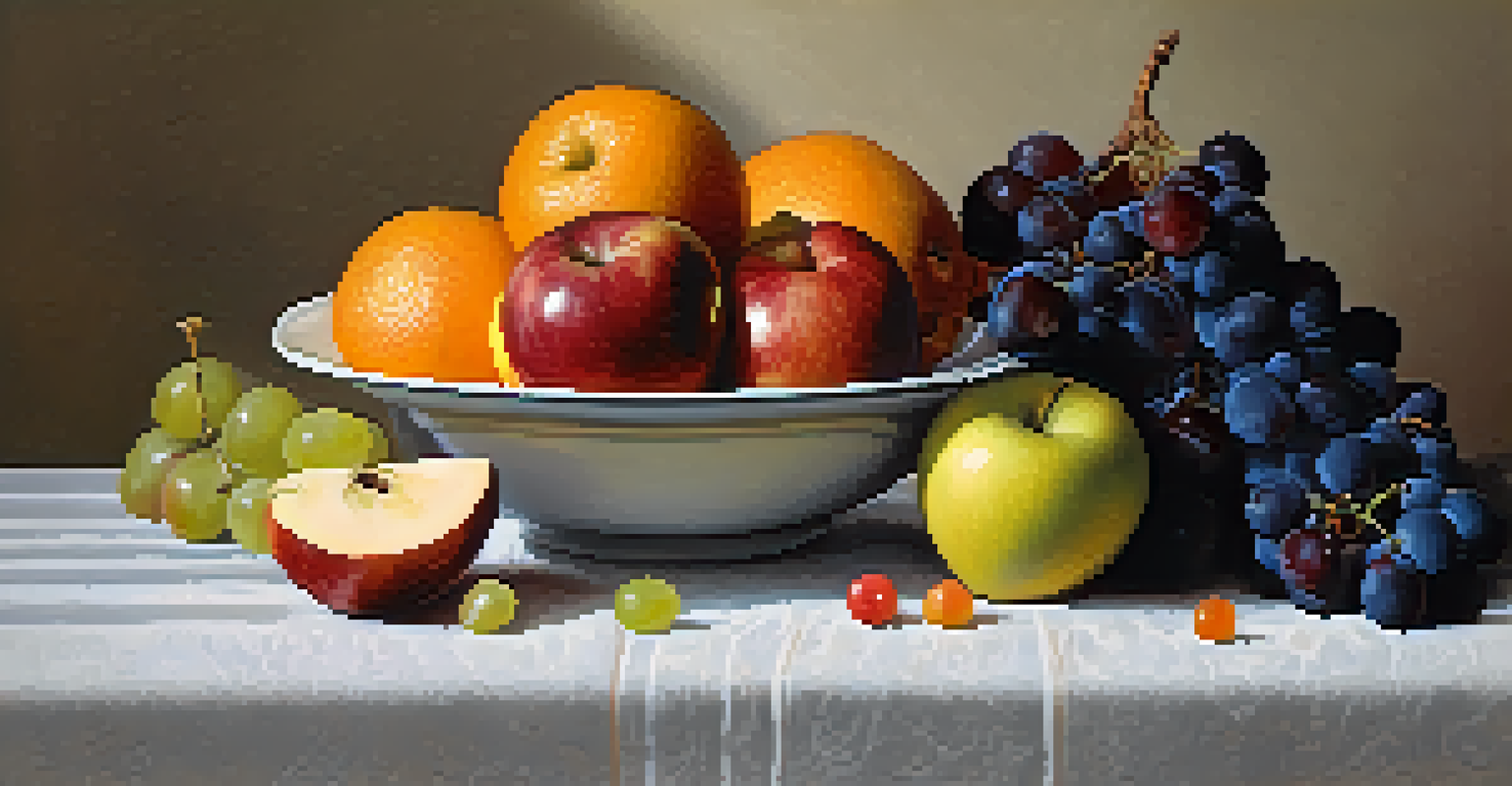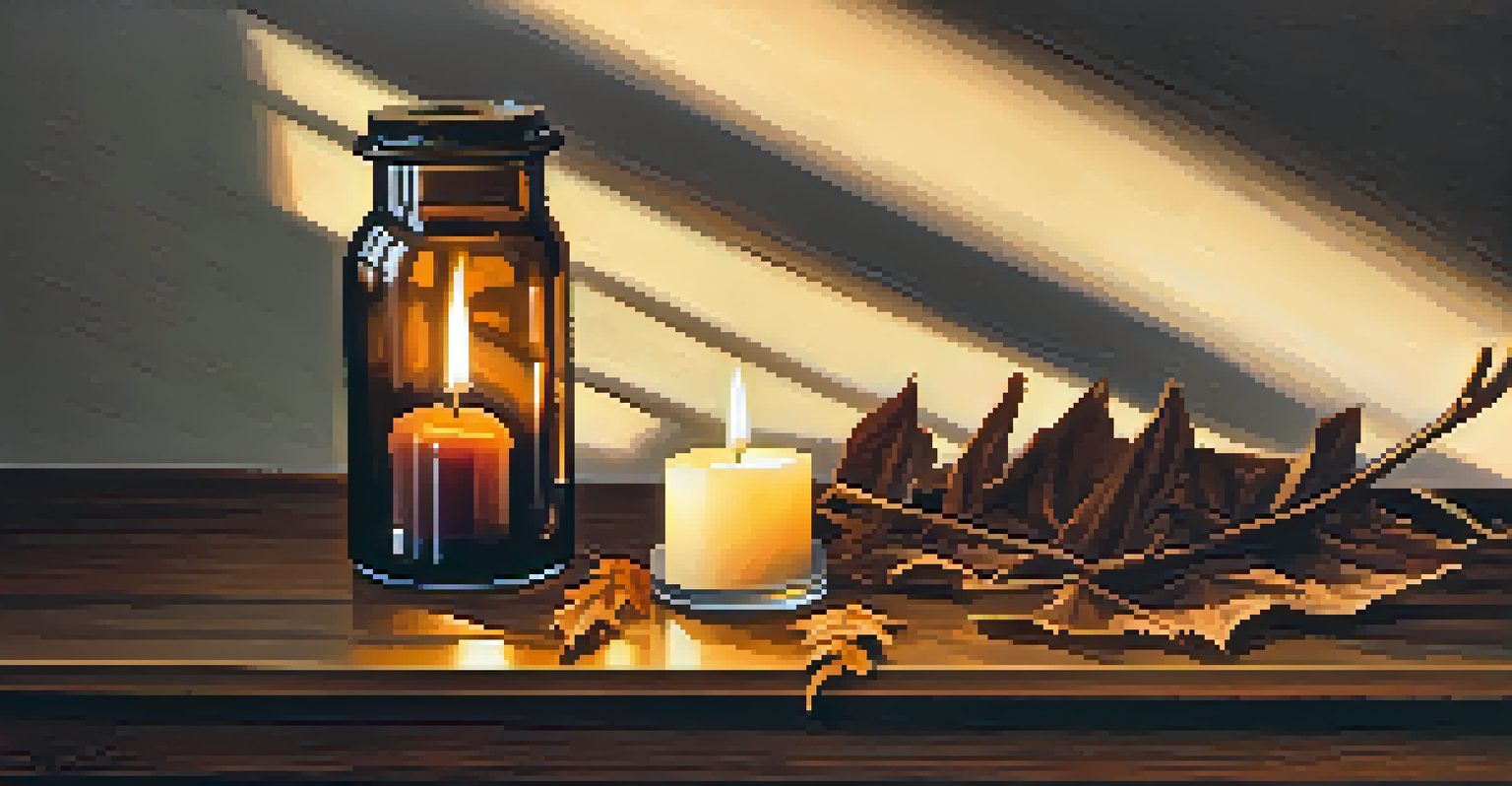Key Techniques in Creating a Modern Still Life Masterpiece

Understanding the Essence of Still Life Art
Still life art is a captivating genre that brings ordinary objects to life. It allows artists to explore composition, color, and texture while conveying deeper meanings. By focusing on inanimate subjects, artists can create a narrative or evoke emotions, making the viewer pause and reflect.
Still life is a way of creating a narrative without words, inviting the viewer to pause and reflect.
The beauty of still life lies in its simplicity, often showcasing everyday items like fruits, flowers, or household objects. This genre encourages artists to observe their surroundings and appreciate the overlooked beauty in mundane things. Understanding this essence is the first step toward creating a modern masterpiece.
As you delve into still life, remember that it’s not just about replication but interpretation. Each artist brings their unique perspective, transforming simple objects into a story waiting to be told.
Choosing Your Subject Matter Wisely
Selecting the right subject matter is crucial in creating a compelling still life. Look for objects that resonate with you personally; they will naturally inspire your creativity. Whether it’s a vintage teapot or a colorful arrangement of flowers, your connection to the objects will reflect in your work.

Consider the emotions you want to evoke. Certain items can stir nostalgic feelings, while others might convey joy or tranquility. For instance, a bowl of vibrant fruits can suggest abundance and vitality, while a solitary candle might evoke contemplation.
Essence of Still Life Art
Still life art transforms ordinary objects into narratives, encouraging artists to appreciate and interpret the beauty in everyday items.
Don't be afraid to mix and match different objects to create a dynamic composition. Combining varied textures and colors can lead to interesting contrasts, enhancing the visual impact of your piece.
The Art of Composition in Still Life
Composition is the backbone of any still life artwork. It refers to how elements are arranged within the frame, guiding the viewer's eye and creating balance. A well-composed still life draws attention to the focal point while allowing for a harmonious flow throughout the piece.
Art is not what you see, but what you make others see.
Utilize the rule of thirds as a guideline. By placing your primary subject off-center, you create a more engaging visual experience. Experiment with different arrangements to see what feels right—sometimes, the most striking compositions come from unexpected placements.
Additionally, consider how negative space can enhance your work. Leaving empty areas within your composition can create a sense of breathing room and draw attention to your focal objects.
Playing with Light and Shadow
Light plays a pivotal role in still life photography and painting, influencing mood, depth, and texture. Natural light can create soft shadows and highlight the intricate details of your subjects. Pay attention to how the light interacts with your objects, as this can dramatically alter the perception of your piece.
Experiment with different lighting setups. For instance, side lighting can create dramatic shadows, adding depth and dimension, while diffused light can soften the edges, creating a serene atmosphere. The choice of light will depend on the emotions you aim to convey.
Importance of Composition
Effective composition guides the viewer's eye and creates balance, making it essential to experiment with arrangements and utilize negative space.
Remember, shadows are just as important as the objects themselves. They can ground your composition and add a layer of realism, making your subjects appear more three-dimensional.
Incorporating Color Theory into Your Work
Color theory is essential in still life, influencing how viewers connect with your artwork. Understanding the color wheel can help you create harmonious palettes or striking contrasts. For instance, complementary colors—those opposite each other on the wheel—can make your subjects pop and draw the viewer's eye.
Consider the emotions different colors evoke. Warm colors like reds and yellows can create feelings of warmth and happiness, while cool colors like blues and greens promote calmness. By selecting a color scheme that aligns with your intended message, you enhance the impact of your still life.
Don't shy away from experimenting with bold colors and unconventional combinations. Modern still life often pushes boundaries, inviting viewers to see everyday objects in a new light.
Utilizing Textures for Visual Interest
Texture adds another dimension to your still life, inviting viewers to engage with the artwork on a tactile level. Incorporating a variety of textures—smooth glass, rough wood, soft fabric—can create a rich and dynamic composition. This interplay keeps the viewer's interest alive throughout the piece.
When arranging your objects, think about how their textures interact. A shiny apple placed beside a matte ceramic bowl creates a visual contrast that can be quite striking. This contrast can also enhance the overall narrative of your still life.
Experimenting with Techniques
Modern still life encourages the use of mixed media and unconventional materials, allowing artists to push boundaries and explore contemporary themes.
To emphasize texture, consider your medium as well. In painting, brush strokes can mimic the textures of your subjects, while in photography, adjusting focus and depth of field can highlight certain surfaces.
Experimenting with Modern Techniques
In the realm of modern still life, experimentation is key. Don’t hesitate to incorporate mixed media or unconventional materials to give your artwork a fresh perspective. For instance, combining painting with digital elements can create a unique blend that challenges traditional boundaries.
Consider using photography as a medium for still life. With the right techniques, you can capture stunning images that highlight the beauty of everyday objects. Play with angles and perspectives to discover new ways of seeing your subjects.

Also, explore themes that resonate with contemporary life. Modern still life can reflect societal issues, personal experiences, or even abstract concepts, making it a versatile and powerful form of expression.